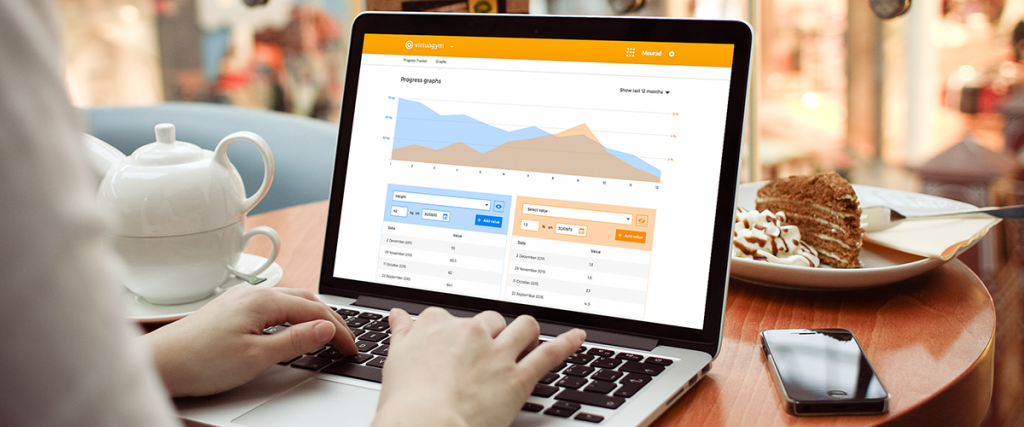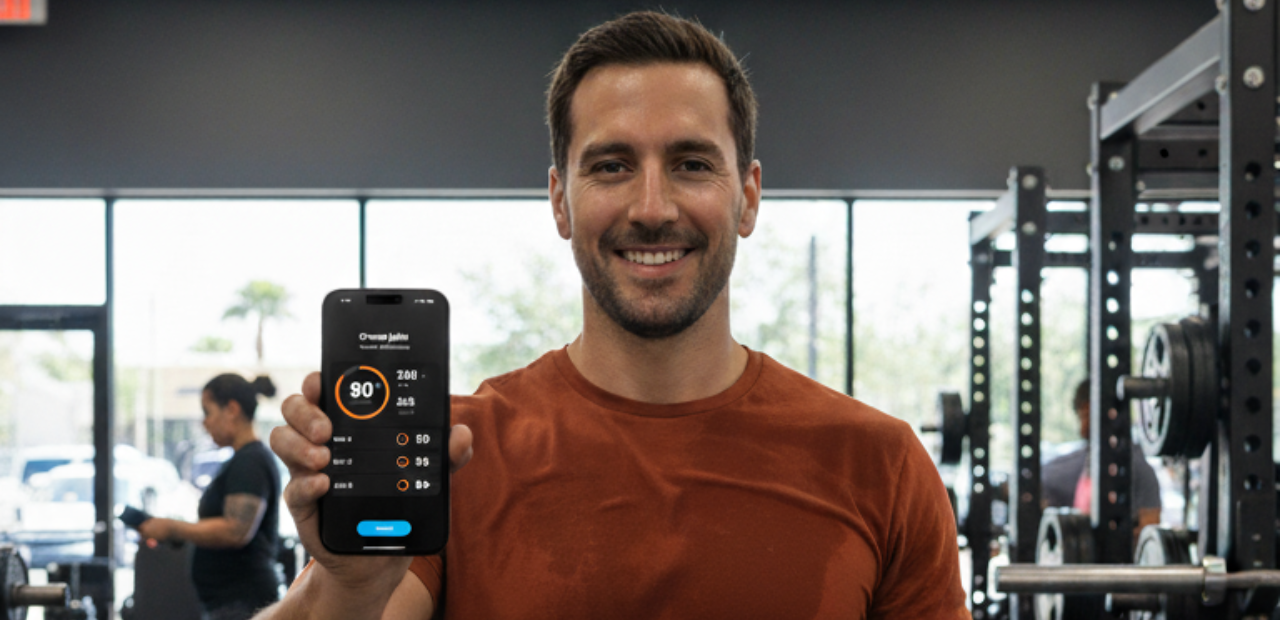Quantified Self is everywhere. It’s the process of measuring all kinds of data about your daily life to gain self-knowledge. While it’s been around since the 70s,[1] since the mid 2000s Quantified Self has taken flight thanks to the rapid developments in wearable technology. More and more people are tracking and measuring their daily activity, sleep, heart rate, food intake, and more. This development has a significant effect on the fitness industry as well. In this article, I’ll outline the impact of the quantified self movement in the fitness industry, and how professionals can respond to the development to improve their service level.
What is Quantified Self?
Quantified Self, simply put, is self-knowledge through self-tracking. By measuring a variety of data about your personal life, you can identify patterns in your life. These patterns can be used to adjust and improve daily activities to accomodate a healthier lifestyle. Quantified Self works on four levels:
- Input: what have you eaten or drunk?
- Physical Health: your heartrate, blood pressure, cholestorol, etc.
- Mental Health: your mood ( yes, there are apps for that! ), satisfaction, quality of sleep, etc.
- Performance: steps taken, miles travelled, calories burned, etc.
On all these levels, data is gathered and processed into visual representations: graphs, tables, etc. Of course, data isn’t enough. That’s why the second step is using this data in a feedback loop to improve your functioning where you want it to improve. This is typically done using the following three questions:
- What have I done?
- How did I do this?
- What have I learned?
The answers to these questions ideally lead to behavioural change. In theory, Quantified self is a very democratic form of knowledge-gathering and self-improvement. I don’t know about you, but I have regularly heard how Quantified Self means that now, everyone can be their own coach. Knowledge is at everyone’s disposal, right?
Now, as mentioned, gathering the data needed can be done using a variety of ways, but in a majority of cases, it’s done via either smartphone apps or wearables.

The Rise of Wearables
Wearables are booming, there’s no denying it. A recent IDC forecast predicts that worldwide shipments of wearables will surpass 200 million units in 2019, reaching 110 million shipments in 2016 alone - a 38.2% growth compared to the previous year. These developments are mostly driven by tech giants like Google and Apple, who are investing heavily in smart watches, glasses, and so on.
If this is any indication, it means that wearables are becoming a fact of life.
The Fall of Wearables?
Not everyone is convinced by these numbers. In an article for Business Insider, founder and CEO of RunKeeper Jason Jacobs predicts - perhaps not unsurprisingly - that fitness wearables are a passing trend that will eventually die out. Interestingly enough, his opinion seems to be corroborated by studies that show abandonment rates of up to 30% for fitness wearables. So what gives? Is it because a home-run product still needs to be developed, and that current trackers are just not up to par? Or is it because, like Jacobs notes, the future of fitness tracking is software-only, with all Quantified Self measuring happening via the phone?
Quantified Self via Fitness Apps
Of course, a lot of data can be, and is, gathered via smartphones. Fitness apps can be used to track a variety of workout data: from the time spent on a treadmill to max reps and 1RM. Food apps can be used to gather tons of data about food intake patterns, quality of nutrition, and so on. There are apps to measure your sleep, apps to track your mood - the list goes on. Some phones even come equipped with heart rate monitors - though this is only mentioned as one of the “less useful bells and whistles”. Because let’s be honest, it’s much more comfortable to have a thin tracker strapped to your wrist than a 6-inch smartphone.
Quantified Self and the Fitness Industry
I hope by now it’s clear that individuals can gather a ton of data independently. What does that mean for the fitness industry? Does this mean that Quantified Self will replace the personal trainer? Absolutely not. Quantified Self is a tool. The only reason members will walk away from a professional, is if the professional doesn’t deliver the service and results the client wants and deserves.
Digital natives: the New Members
A quick word on the new generation of members: they are digital natives. They are connected to the internet 100% of the time. They are used to wearables and smartphones and modern technology. Their demands reflect their comfort around technology. And professional fitness services should adapt to that demand, plain and simple. Read more about the why and how of targeting the new generation of gym goers here .
A Business Opportunity
First, let’s be very pragmatic and recognize that quantified self presents a clear business opportunity for health clubs. A lot of health clubs work with self-management: their members go in, do their workouts, and go. By offering branded fitness apps and even by controlling the sales of wearables, gyms can create new revenue streams with both new and existing members, while simultaneously improving the quality of their services. Furthermore, these apps and wearables can function as the missing link between your members’ daily lives and your club. Extending your service beyond your club will have a positive effect on member loyalty, and lifetime value.

Personal Coaching
I believe a great deal of the added value of integrating Quantified Self within a health club’s services is found in the integration with personal coaching services. This is because of several reasons. 1. Data alone is not enough. Quantified Self means a ton of data. Yes, this data is processed in clear graphs. But data alone is not enough. It needs to be interpreted. And this is where the knowledge and expertise of a trained professional can make the difference. Coaches and trainers have the knowledge to identify common patterns and how to change them. Especially with the huge amount of misinformation present on the internet these days, having a trained professional clarify the data a member measures can lead to much faster and better improvements to their health.
2. Fitness is a human problem Even if interpretation isn’t the issue, it is not the final step in the feedback loop. The final step is behavioural change. And let’s be honest, for the majority of people, that’s the bottleneck. Fitness is not a data problem, it is a human problem. Fitness is the result of a complex relationship between a lot of factors: time, motivation, money, willpower, not to mention the insanely complex thing we call human health.
Because of this, personal coaching would be served well by integrating Quantified Self. Besides the obvious reason that having a professional interpret measured data and advise on a future course of action leads to more effective progress and faster results, there are more benefits.
1. Quantified Self Means Flexibility Quantified Self means flexibility. By letting members track activity, nutrition, body weight, etc. on their own, coaches don’t need to physically be there. This means members have the flexibility to weigh themselves in the comfort of their own homes. This also means that coaches have access to measured data anywhere (when properly integrated with a coaching software solution ), allowing for effective coaching from a distance.
2. Quantified Self Means Adaptability As mentioned, coaches have immediate access to measured data. This means more than just sending members a quick message when the coach notices their activity is lagging. If members track sleep quality, coaches can quickly adapt training routines when they notice that someone had a short night. Similarly, when a coach sees a member has only eaten an apple for the whole day, they might think twice about planning a high-intensity cardio session - indeed, it might be better to have a talk about the member’s nutrition pattern.
Conclusion
Quantified Self is not just a fad. It’s a way to gather more knowledge about ourselves. And knowledge is never a bad thing. The strengths of quantified self are flexibility and adaptability, and more insights into the patterns of daily functioning. The challenge of quantified self is the gaps that lie between data gathering, interpretation and behavioural change. And it is precisely these gaps that can be bridged by fitness professionals. The knowledge and expertise of fitness professionals, combined with the data gathered by their clients, can help guide people to healthier and happier lives. Quantified self through wearables and fitness apps is becoming the norm. As a fitness professional, now is the time to respond and adapt to this development, and improve your service level.




